After doing extensive research, reading, completing a couple of MOOCs, and social learning I realized that I tapped into a grey area. At first, I thought it all made sense until I realized that instructional design and user experience design are two different fields that seem to have little awareness of each other. Generally, the different opinions I have observed brought me to two streams of thoughts, first, the concept of learning experience design, and second that user experience design will take over instructional design. I found the two notions are not completely true, mainly because they look at one side of the equation, but before I continue with my findings let’s look into the most important terms that I will come across in this post.
Instructional Design (ID)
According to the Association of Talent Development, instructional design is the creation of learning experiences and materials in a manner that results in the acquisition and application of knowledge and skills. The discipline follows a system of assessing needs, determining learning objectives, developing materials, and evaluating their effectiveness.
Learning Experience Design (LXD)
LXD.org defines Learning experience design as the process of creating learning experiences that enable the learner to achieve the desired learning outcome in a human-centered and goal-oriented way. In LXD the focus in on the learner and the process that the learner goes through.
User Experience Design (UXD)
The Nielsen Norman Group co-founded by professor and author Don Norman states that User experience encompasses all aspects of the end-user’s interaction with the company, its services, and its products. User experience design is the process of supporting user behavior through usability, usefulness, and desirability provided in the interaction with a product. UX designers employ design thinking processes to reconcile user’s needs with technical feasibility and business viability.
User Interface Design (UI)
Interaction Design Foundation defines user interface design as the process designers use to build interfaces in software or computerized devices, focusing on looks or style, UI design refers to graphical user interfaces and other forms—e.g., voice-controlled interfaces.
ID vs. LXD
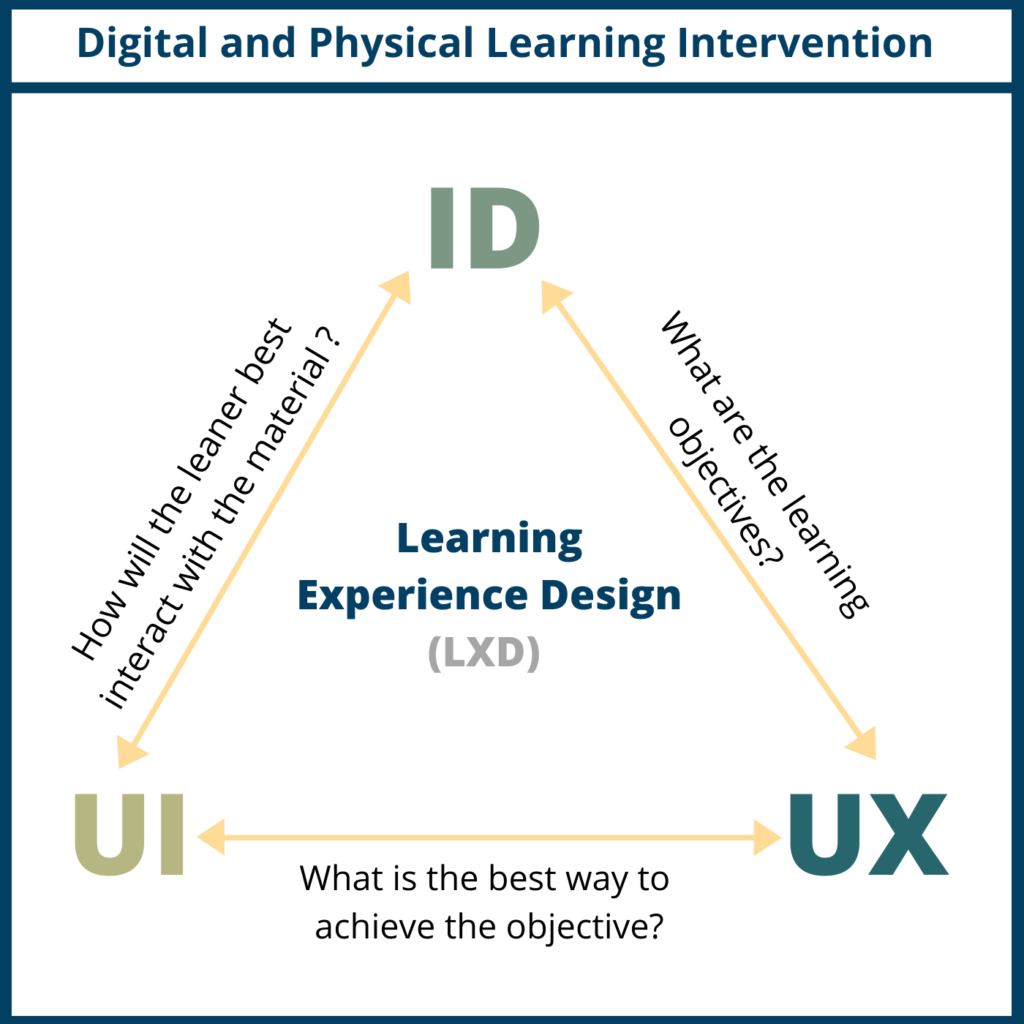
Exploring the relationship between ID and UXD most of the time led me to the concept of learning experience design (LXD). Supporters of this opinion made it as simple as ID + UX=LXD. The difference they made between ID and LXD is that instructional design focused on the instructions and instructor, while learning experience design focused on the learning and the learning process. I disagree with this opinion, it cannot be as simple as this equation is showing, because ID is broader than is claimed. Instructional design puts the learner as the center of the process. It analysis learners, their context, needs, and then uses the best pedagogical practices to deliver the learning. An opinion that I support, is that Learning experience design is the new name of instructional design because it fairly represents the work done by instructional designers and makes it easier for others to immediately understand what instructional designers do. However, using UX and UI design principles in addition to ID to develop training material will result in a rich learning experience outcome.
ID vs. UXD
Some of the opinions that I came across during my research is that UXD will take over instructional design because it is more user-centered, and that is what eLearning needs. Though using UX guidelines for designing learning material especially eLearning is very beneficial and adds great value to instructional designers, I still do not think that user experience designers will be able to replace instructional designers, mainly because UX designers do not have a pedagogical experience. Learning is not about usership only, it is about knowledge transfer using effective learning theories and tools.
Looking at both processes of ID and UX we can find many similarities. They both involve analysis of user or learner, aim to develop an effective and user-friendly experience, and achieve the set goal.
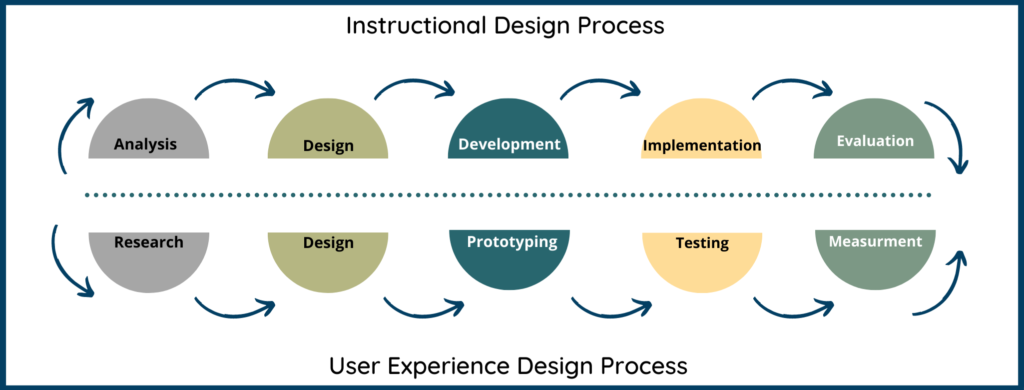
Roles Comparison
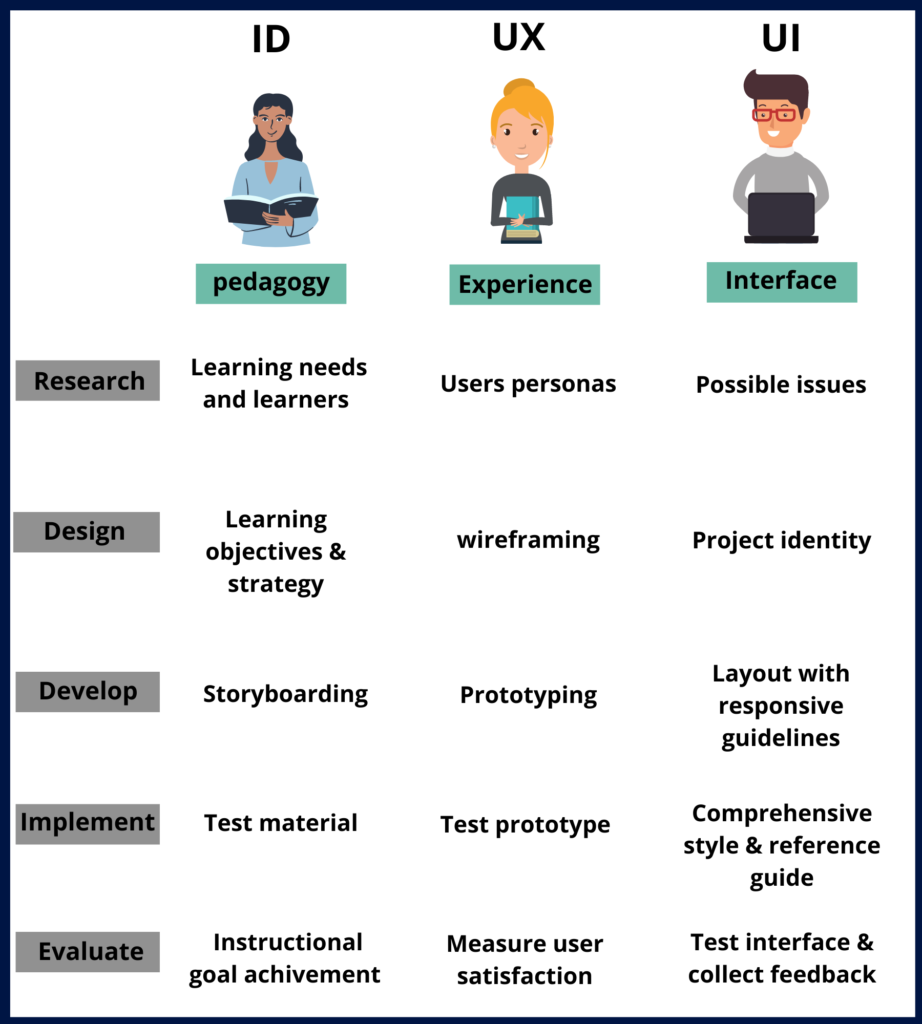
ID and UI
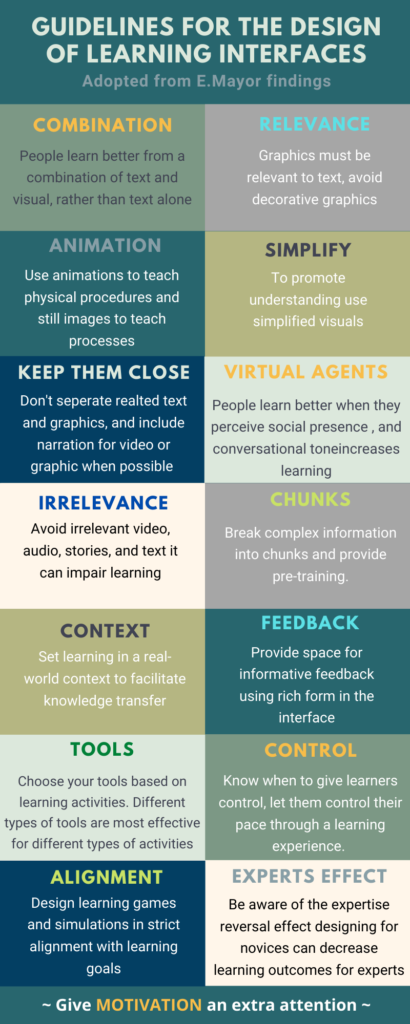
The relationship between Instructional design and user interface design is derived from the ability to use interface design principles to eLearning material or physical training material as well. User interface design is applied on the interface the user interacts with, for example in an eLearning training UI design principle applies to navigation buttons, font, white space. Typography, images, video, text are an example of a physical material that can make use of UI principles. What UI principles can add to ID is providing useful guidelines and tips for designing learning assets such as videos, info-graphic, and eLearning modules interface.
How do they work together?
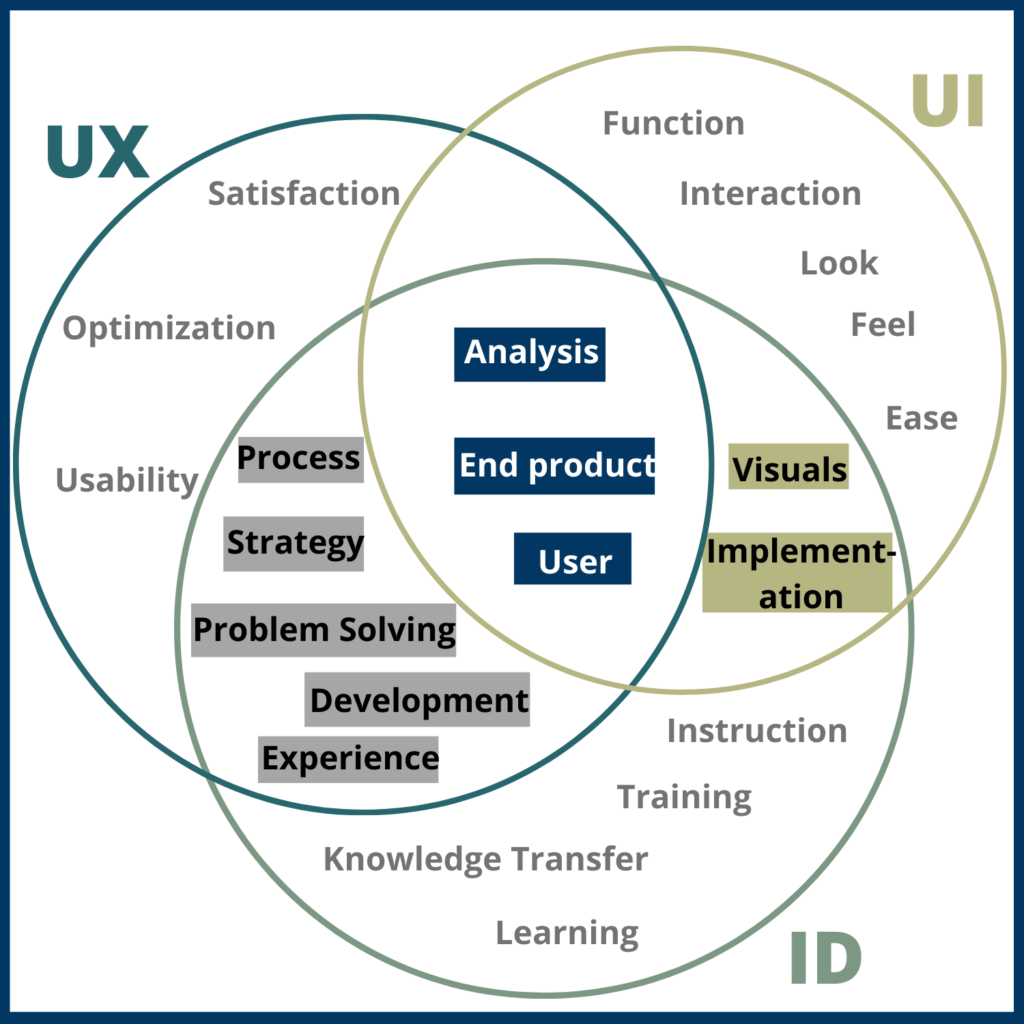
Applying UX and UI principles in ID is very beneficial for the outcome, it will result in a better experience in general when putting all into consideration. However, due to the similarities between UX and ID, there might be minor additions when the instructional designer is working on the full instructional design process. The ability to fully apply the principles can be impacted by the size of the team, if an instructional designer is individually working on a learning experience, they might not be able to fully accommodate all UX and UI principles, and following ID or LXD principles will make them end with a good learning experience; however, if working within a big team to design, then having a UX designer and UI designer on board can be of a great added value.
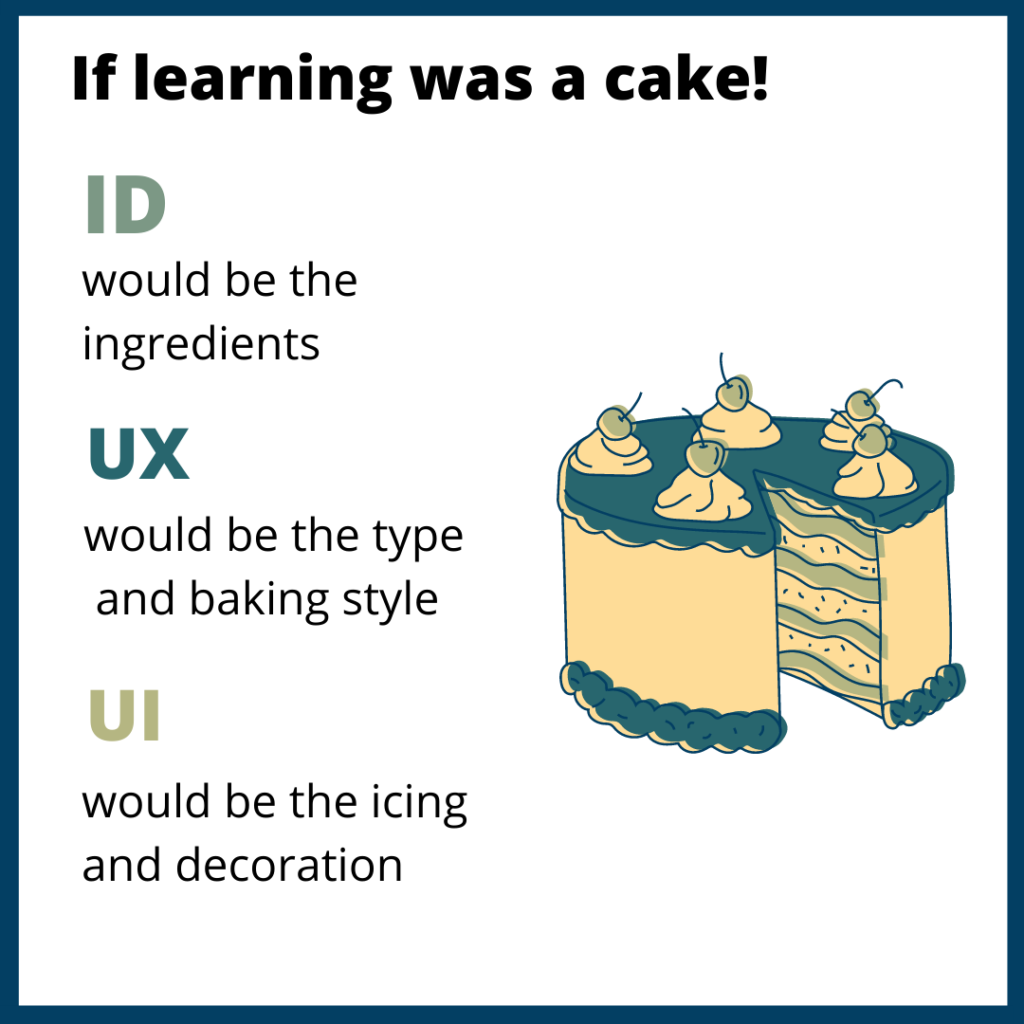
At the end of my research I found out that there are a lot of similarities between UX and ID, but each is being applied in a different field. UX and UI design complement instructional design in producing an efficient, eye-pleasing, and user-friendly learning experiences. I like to use the cake analogy, it gives it some sense.
This was my takeout on the association between ID, UXD, and UI design; would love to hear a different point of view from you on this matter.
Featured image by UX Indonesia on Unsplash
]]>Small businesses and startups are other environments were employees’ training and development are overlooked, which can be understandable. However, what these businesses need to keep in mind is that employment market can be competitive, and small businesses don’t always provide a sense of job security so a lot of times they end up with less skilled employees because they are not able to compete with bigger companies who have higher salary scale, development programs for their staff, a stronger name to add to their resume, and a well-established hierarchy that gives them a sense of safety.
An article by Monster.com talks about employees retention and lists employees not given developmental opportunities among the reasons they quit their jobs. From my managerial experience, employees are encouraged to stay in a company that invests in their development by providing training and growth opportunities. Therefore, small businesses need solutions to how they can provide such an environment for their employees while maintaining a reasonable budget.
A great solution is micro-learning based training. Though micro-learning does not have a universal definition, I will refer to a simple definition by Karla Gutierrez, as she defines it as an educational approach that offers bite-sized, small learning units with just the necessary amount of information to help learners achieve a goal. Just like how bite-sized food have the full flavor, taste, and experience of the same full-sized dish, and gives the person a chance to try different varieties of flavors while being easy on the stomach; micro-learning let you learn what you need in a shorter time, giving the learner a chance to learn several things quicker while engaging in a full learning experience that is more digestible for the brain.
Why micro-learning can be a solution for your small business or tight budget?
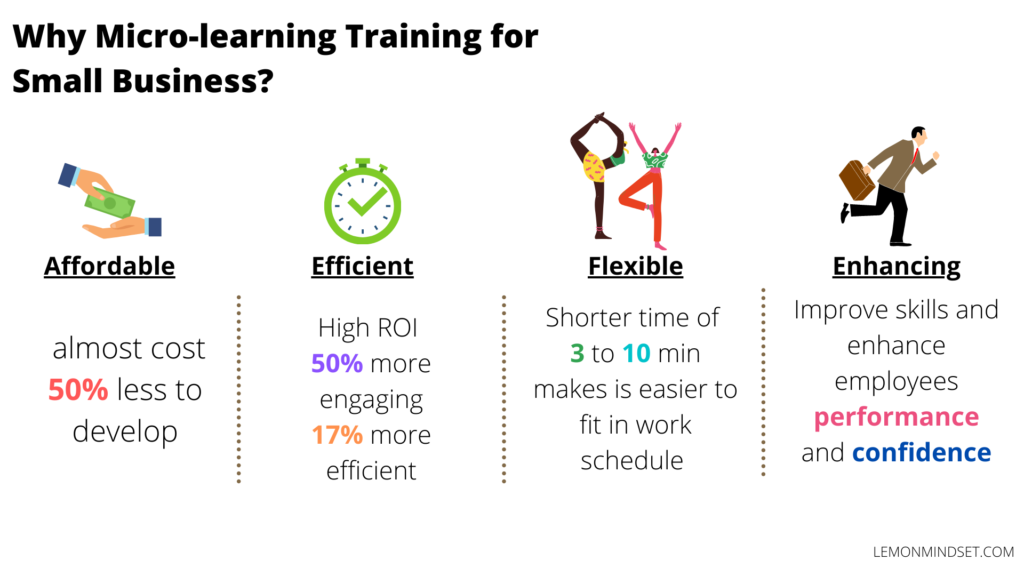
1- Affordable:
Developing micro-learning training material can cost almost 50% less than conventional learning programs, generally because they are shorter and take less time to develop. Also, most of the time micro-learning does not need an instructor, training space, or equipment, as they are self-directed eLearning experiences at most. Some platforms such as Youtube and Wikihow provide free material as well, all you need is to give your employees the time and encouragement to engage with micro-learning.
2- Cost and time efficient:
Micro-learning has a high return on investment (ROI) because they are highly effective compared to what they cost. Studies show that with micro-learning the transfer of learning is around 17% more efficient and the learning experience is 50% more engaging, resulting in better retention of learned knowledge. Therefore the amount of money spent on employees’ micro-learning training considered well invested.
3- Flexible:
Micro-training gives the employees the flexibility of accommodating them in their busy working schedule, without them being away from their office or daily responsibilities for a long time. This made possible by the bite-sized nature of the materials used that average between 3 to 10 minutes and can be easily accessed from any mobile device. This is crucial for small businesses that operate with a small number of employees.
4- Enhances employees’ performance:
Many businesses work hard to have highly skilled employees, as it provides them with a competitive advantage. Unfortunately, small businesses can’t afford to have an employee for every specific role in the business, therefore, they tend to have an employee performing more than one task. However, it is not easy to find one employee who is a high performer at all tasks. Micro-learning can help business owners in developing specific skills that their business needs because they are focused and learner-centered. Micro-learning works well in providing learners with the precise needed skill and know-how, leaving them feeling more empowered and confidant.
If you think that micro-learning is a solution for your small business, I am curious know what are the most required skills for your employees and why?
Featured Image by Miguel Andrade on Unsplash
]]>Unfortunately, I have witnessed local companies spending big budgets on buying or exporting translated training material from other countries and expect to get great results and achieve the desired learning objectives, only to find out that the trainees’ feedback is negative and the money they spent is almost gone to waste. What some of the companies don’t realize is that training is not a copy paste solution, and good learning experiences cannot be 100% commercialized.
Good learning material depends greatly on the amount of research and analysis spent on understanding and learning about the learner and their context. Therefore, buying a translated learning material or curriculum is not the solution for effective learning. Culture is more than language, it includes body language, tone of voice, phrases used, values, ethics, and much more.
In her article, Pamela shares some insights from the book Culturally Inclusive Instructional Design on how culture affects learning. The ways how culture impact learning take in motivation and what moves learners to learn, how the role of teacher is perceived, the willingness to engage in activities, how is success and failure perceived, and if working collaboratively or individually is preferred. All of these dimensions can’t be filled by merely translating the language.
There is no doubt that designing learning material for a culturally diverse group can’t accommodate all the individual differences, but deploying the proper framework when designing the material is a good way to start. In her article Pamela explains why universal design for learning (UDL) is an effective framework to build training or eLearning for international or culturally diversified audience. UDL’s three principles of providing multiple means of representation, action and expression, and engagement, can be the solution to creating more culturally sensitive learning.
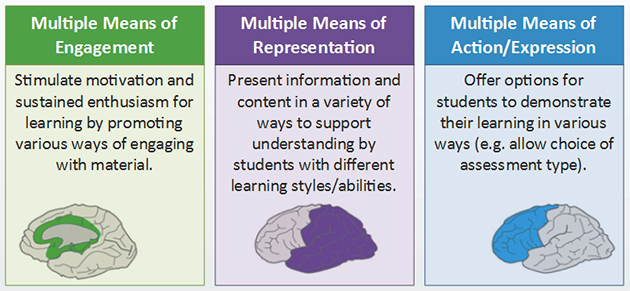
Also from my side, I find that having a diversified team of instructional designers to create learning material for international learners can help in identifying cultural based learning differences, and if a material needs to be translated, I suggest having a local instructional designer from the targeted culture to help in translating the unspoken content.
I suggest you take a look at Pamela’s article UDL Is the Key to Culturally Inclusive Instructional Design for more on how UDL principles work to create culturally inclusive learning material.
On the other hand, I wonder if you have a relevant experience to share; I would love to hear your point of view.
Featured image by Gerd Altmann from Pixabay
]]>